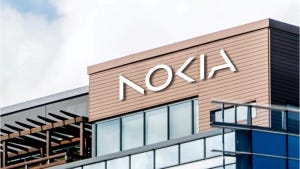General Bandwidth Spins in Reverse
IP softwitch vendor offers 'reverse' gateway, pitching carriers a gradual way to replace Class 5 switches
February 15, 2005

SAN ANTONIO -- General Bandwidth Inc. says it's got a kindler, gentler way for carriers to perform the telecom equivalent of a heart transplant -- the replacement of Class 5 telephone switches with VOIP equivalents. It calls it the "reverse" voice gateway.
It comes courtesy of a new twist that General Bandwidth has added to its existing G6 VoIP Media Gateway (MG) and announced here at the NTCA Annual Meeting and Expo (see General Bandwidth Runs a Reverse).
The "reverse" moniker refers to the way the media gateway works. Instead of sitting on the edge of an IP network, terminating telephone calls and popping the voice into packets, it sits upstream of legacy remote terminals like digital loop carriers (DLCs). In this position, it terminates circuits heading for a legacy Class 5 switch, pops the voice into packets, and directs them to a softswitch instead.
General Bandwidth says it's added the necessary GR 303/V5.2 T1 or E1 interfaces for the reverse gateway. The vendor claims to be the only gateway provider that can perform the traditional gateway functions and act as a reverse gateway, depending on the carrier's needs.
"The DLCs think they're connected to a switch, and the softswitch thinks it's connected to several IP end points," says Ken Cavanaugh, General Bandwidth's director of business development and corporate communications.
General Bandwidth says a single G6 chassis can efficiently serve as few as 240 lines for the smallest VOIP deployments, but it can also expand to more than 100,000 lines for the largest deployments.
But there may be one important issue with the reverse approach: The market for reverse gateways may not be that big, for starters. Research shows if a carrier's plan is transition to a full suite of triple-play services serviced by a DLC, they may not need a reverse gateway.
General Bandwidth's G6 was ranked the best trunking gateway in a Heavy Reading report published last year, entitled: "VOIP: A Comprehensive Competitive Analysis of Media Gateways." But that report also pointed out that many carriers may seek this inverse functionality in the form of a third-generation, or broadband, DLC:
The 3GDLC access media gateway enables the most graceful Class 5 migration to VOIP possible. The most useful configuration is the broadband loop concentrator (BLC), in which any line can be POTS or DSL, and all POTS traffic is packetized for backhaul to a softswitch or via an inverse media gateway to a legacy Class 5 TDM switch. In this configuration, any line can be turned up for DSL automatically through the management system, and any POTS line can be routed to a legacy switch or a softswitch.
"The smart money is still moving to media gateways in multiservice access nodes and 3GDLCs," says Graham Beniston, author of the report. "So while there will be significant networks where legacy DLCs remain TDM-based, the big boys will deploy media gateways in Alcatel 7330s and 7302s, or they will deploy broadband digital loop carriers." Vendors offering broadband DLCs include Occam Networks Inc. (OTC: OCCM), Calix Networks Inc., Ciena Corp. (Nasdaq: CIEN), and Entrisphere Inc.
This may limit the market potential of the reverse gateway approach, though General Bandwidth is likely to focus sales efforts on regional carriers and IOCs (Independent Operating Companies).In a related announcement, General Bandwidth also announced a new customer in Choice One Communications.
— Phil Harvey, News Editor, Light Reading
You May Also Like










